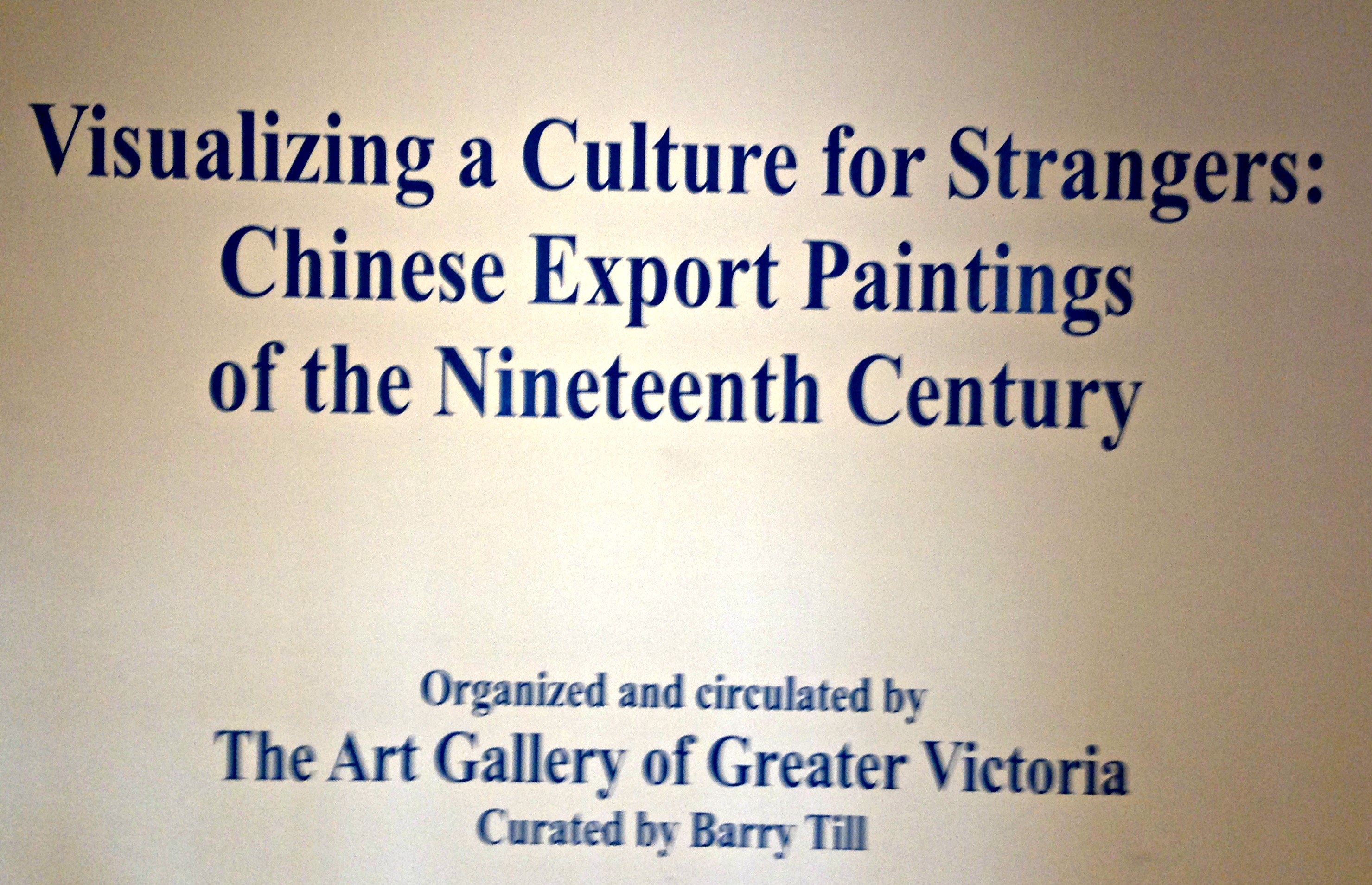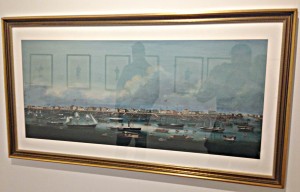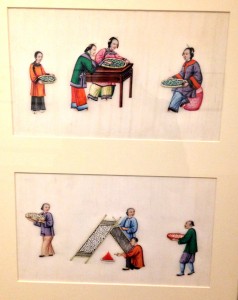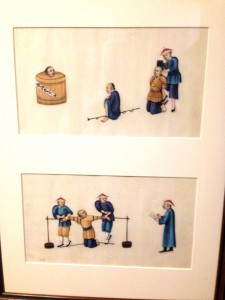Victoria: Visualizing a Culture for Strangers
Located within Ceperley Mansion, the Burnaby Art Gallery’s new exhibit “Visualizing a Culture for Strangers: Chinese Export Paintings of the 19th Century” encourages its visitors to think not only about the art itself but about the context in which it was created and the history behind it. This exhibit is on loan from the Gallery of Greater Victoria and takes up both floors of the Burnaby gallery. Upon entering you are drawn to walk to the left and are introduced to the exhibit by a large poster that explains the significance of all the art in the gallery. This explanation is written in both English and Chinese, the two cultures whose connection led to the development of this art.
What the description wants to inform the visitors of is that these paintings do not convey what was considered real art in China at the time they were created, but rather what the visiting Europeans considered to be art worth bringing home. These paintings were never meant to hang in the homes or galleries of China, but were mass produced solely for export and profit. Europeans wanted familiar art that they could relate to and understand, while Chinese art at this time was much more abstract and surreal. These paintings acted like photographs before the invention of the camera. The first paintings are large port scenes, done in great detail, which show just how hard the Chinese worked to ensure their art looked European. These paintings acted like souvenirs, or postcards, that foreigners could ship home and show their friends and family. Several portraits also have a very formal European feel to them, which is something that would not have been naturally popular in Chinese art at this time. The less formal paintings of more ordinary people are interesting, as it is unclear who they are or why they were chosen to be painted. Perhaps they were people foreigners had met during their travels. Much of the art focuses on those things that would have been exotic to travelers from Europe, mainly Chinese architecture, people, boats, plants, animals, particularly butterfly’s, and scenes depicting trial or unique forms of punishment. It is this fascination with the exotic that would have led to the popularity of these paintings in the first place. Some interesting leaf paintings were also on display, which featured deities or famous figures painted on a leaf that had been soaked for weeks to remove its green colouring. These look like something that would have been more traditional Chinese but were just a more exotic souvenir for Europeans to bring home.
What the viewer must be cautious of is how these paintings translate everyday life in China. Only certain scenes would have appealed to the Europeans and since the Chinese aimed to profit from the paintings they would have focused on the scenes that would sell. It is probably likely that this version of Chinese life would have betrayed what everyday life was actually like at the time. Thus when they took these paintings home, Europeans would only become more fascinated with the culture that appeared to them in the paintings, even if it was not an accurate depiction. These paintings show an interesting blend of the two cultures, as they work to tie together traditional Chinese scenery with European ideas of art. Overall, the intersection provides some interesting paintings that provoke the viewer to look into how history and cultural interaction play a role in shaping art.



